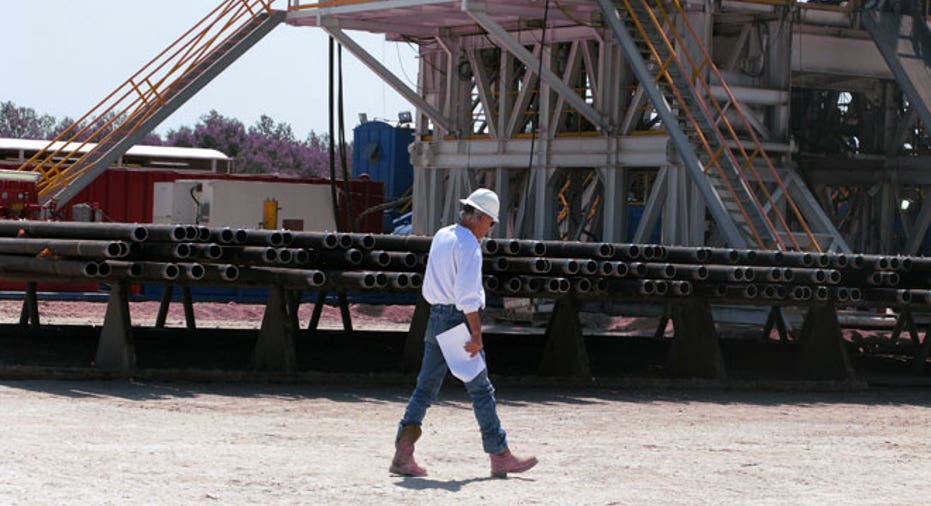U.S. Shale Boom Drives Record Oil-Related Exports

Exports of refined products from the U.S. have risen sharply in recent years, another byproduct of the shale boom that has reshaped energy markets.
Access to lower-cost crude from shale plays like Eagle Ford in Texas and North Dakota’s Bakken have given domestic refiners a an edge over international competitors, Standard & Poor’s said in a report this week.
Meanwhile, several nations have yet to unleash their own vast shale reserves, potentially throwing another wrench into energy prices. The U.S. is the only country so far to see a high level of shale oil and gas production.
The shale boom has proven to be a positive development for refiners looking overseas to Europe, Japan, China, Latin America and other regions. According to S&P, exports of refined products have surged by more than 60% to about 1.7 million barrels a day since 2010.
S&P added that while not as significant, more fuel-efficient automobiles are pushing domestic fuel demand lower and thus freeing up oil to be refined into products for export.
Revenues, operating expenses and credit metrics of certain U.S. refiners have strengthened, S&P explained, especially for refiners located close to shale plays.
The report also said the “rising tide” of U.S. exports is putting pressure on various Caribbean refiners to cut back or close operations. In some markets, like low-sulfur diesel, gasoline and jet fuel, American refiners are taking market share from some European competitors.
Before the rapid increase in U.S. oil output, America was a major destination for European gasoline. The country’s need for imported gasoline has decreased significantly, hurting refiners in Europe and transatlantic shippers that would normally bring gasoline to the U.S. and low-sulfur diesel back to Europe.
S&P noted how some of the more sophisticated U.S. refiners were put at a disadvantage once the shale boom kicked off. Many refiners modified facilities to process heavier crude, not the light, sweet crude being produced at shale plays.
The move was intended to prepare refineries for an expected supply increase and price drop for heavier crude. Light, sweet WTI crude used to trade at a premium to Brent and heavier grades like Maya, but the rapid increase in U.S. shale production has reversed that relationship.
Laws largely prohibiting U.S. crude oil exports have also kept the price of WTI and other domestic crude slates relatively low, S&P said.
Some lawmakers in Washington, including Republican Sen. Lisa Murkowski of Alaska, have called for the U.S. to lift the export ban that began in the 1970s. Oil giant Exxon Mobil (NYSE:XOM) has also voiced support for such a move, citing a projected 40% jump in U.S. liquid supplies by 2040.
Overseas Shale Potential
Global energy producers have yet to embark on their own shale boom, even as countries like Russia, China and Argentina sit on large amounts of technically recoverable shale oil and gas.
However, it remains to be seen what portion of those reserves are economically recoverable.
“Although great potential exists for future shale-derived hydrocarbon production, it remains to be seen what percentage of non-U.S. shale resources can be extracted at a profit,” S&P explained in a separate report.
Russia is estimated to have the largest shale oil reserves of 75 billion barrels, according to the Energy Information Administration. The U.S. is No. 2 with 58 billion barrels, followed at a distance by China, Argentina and Libya.
China is believed to have 1,115 trillion cubic feet of recoverable shale gas. The EIA estimates that Argentina has 802 trillion cubic feet, while the U.S. is fourth at 665 trillion. Algeria likely has the third-largest shale gas reserves.
While the U.S. energy industry has roared ahead, shale reserves overseas face several development hurdles such as a lack of drilling resources, land ownership issues and government regulations.
Also, the characteristics of shale can vary from country to country, so techniques that work in the U.S. may not be directly applicable to other nations.
“Although these hurdles will slow shale reserve development outside North America--and in some instances may make production unfeasible--we expect that global shale production will become increasingly significant beyond 2020,” S&P said.